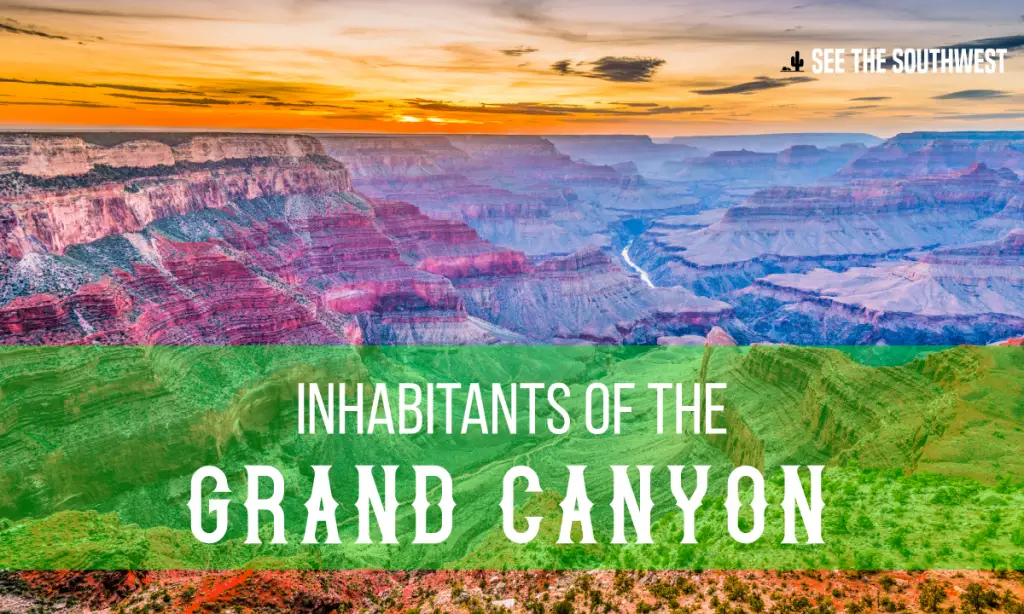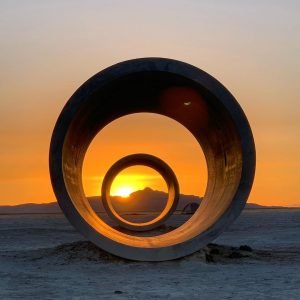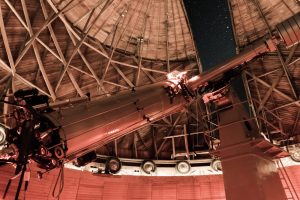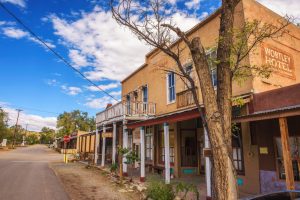
The Grand Canyon has had many admirers over the years. We aren’t the first to be in awe of its natural beauty. The oldest human artifacts in the park are nearly 12,000 years old and date to the Paleo-Indian period. Ancient people have continually occupied the park since that time, and there are more than 4,800 archeological sites that include the following cultural groups: Paleo-Indian, Archaic, Basketmaker, Ancestral Puebloan (Kayenta and Virgin branches), Cohonina, Cerbat, Pai, Zuni, Hopi, Navajo, and Euro-American.
The first known inhabitants of the Grand Canyon, arrived about 11,500 years ago — the Paleo-Indian and Archaic peoples. They hunted and gathered food, moving seasonally across the land, sheltering in caves or overhangs. Spearheads have been found along the rims and the inner canyon of the park to mark the places where they stopped and camped.
Around 3500 B.C., the first evidence of cultivated maize appears in the canyon. While the people did rely heavily on hunting, the cultivation of crops kept them from moving with the seasons. Some of the most unique artifacts from this time have been found in caves below the rim of the Grand Canyon. Formed of folded split willow twigs, the artists carefully shaped the twigs into deer or bighorn sheep.
Around 2,000 years ago, the Basketmaker culture appeared in the Grand Canyon. They built and lived in pit houses; semi-subterranean dwellings, roofed over with study poles. These people are called the Basketmakers because they began weaving baskets, sandals and clothing, many example of which have been found in the park.
Around 500 A.D., the ancestral Puebloan people came to the park and began creating masonry block houses or pueblos. More than 2,000 ruins have been discovered so far. The left behind these amazing ruins and the first evidence of pottery — most often graywares or whitewares with black painted designs. Around 1100 A.D., the Pueblo people moved their dwellings to the higher benches overlooking the river, rather than next to it, probably so they could more easily access larger cultivation areas.
A visit to Tusayan Ruin and Museum is a great place to start exploring the early cultures who lived in the Grand Canyon. The ruin and museum provide a glimpse of Pueblo Indian life some 800 years ago. Located three miles west of Desert View, the Tusayan Ruin and Museum is open daily. There are several Ranger-led programs that will help you learn more about the inhabitants of the canyon. Be sure the check the schedule of talks online or when you arrive in the park.
Today, the descendents of the Ancestral Puebloan people still live in and along the Grand Canyon and you can visit their reservations and learn about their heritage and culture!
The Hualapai Reservation occupies a large area of the western Grand Canyon corridor, south of the Colorado, from Pearce Ferry at the upper end of Lake Mead, 56 miles due east to the boundary of the smaller Havasupai Reservation. The Hualapai have developed one tourist center at Grand Canyon West, a small settlement on the rim 3,600 feet above the river, quite close to the Grand Wash Cliffs that mark the edge of the Colorado Plateau and the end of the Grand Canyon.
The Havasupai Reservation is 518 acres on the floor of the canyon, and is located to the west of Grand Canyon Village. Many refer to this area as the Shangri-La or Garden of Eden of the Grand Canyon, particularly because of the waterfalls located in the area. Havasu Falls and Mooney Falls are among the best loved and most beautiful waterfalls anywhere in the world. Getting to the reservation is a challenge. You’ll have to fly, hike or ride a horse in and the Havasupai require reservations in advance if you plan to camp on the reservation. All visitors are required to check in at the camping office as soon as they arrive.
The eastern edge of the Grand Canyon marks the border of the Navajo Indian Reservation, which covers 27,000 square miles of Utah, Arizona and New Mexico. The Navajo Nation is bordered by their four sacred peaks — Mt. Blanca (Colorado), Mt. Taylor (New Mexico), the San Francisco Peaks (Arizona), and Mt. Hesperus (Colorado). The Navajo Nation Tribal headquarter and tribal seat is located in Window Rock, on the border of Arizona and New Mexico. It is here that you can visit the Navajo Museum, dedicated to preserving the heritage and culture of the Navajo way of life. However, the Navajo invite you to explore the entire reservation and the many natural wonders it offers.
When you visit an Indian Reservation, please abide closely by their rules. They are just like any small town people and deserve your
respect. Always ask before taking photos, after all, how would you like a tourist to come to your home and snap photos without asking? Put on you guest manners and take some time to learn about these unique cultures.
More stories in the Grand Canyon Series include:
Formation of the Grand Canyon
South Rim of the Grand Canyon
North Rim of the Grand Canyon
Inhabitants of the Grand Canyon
River Rafting the Grand Canyon
Grand Canyon Railway
Grand Canyon Skywalk
Condors Make a Comeback in the Grand Canyon
Top 10 Things To Do at the Grand Canyon
Legend of Egyptian Artifacts in the Grand Canyon
The Ghost of Crash Canyon
Phantom Ranch at the Grand Canyon




